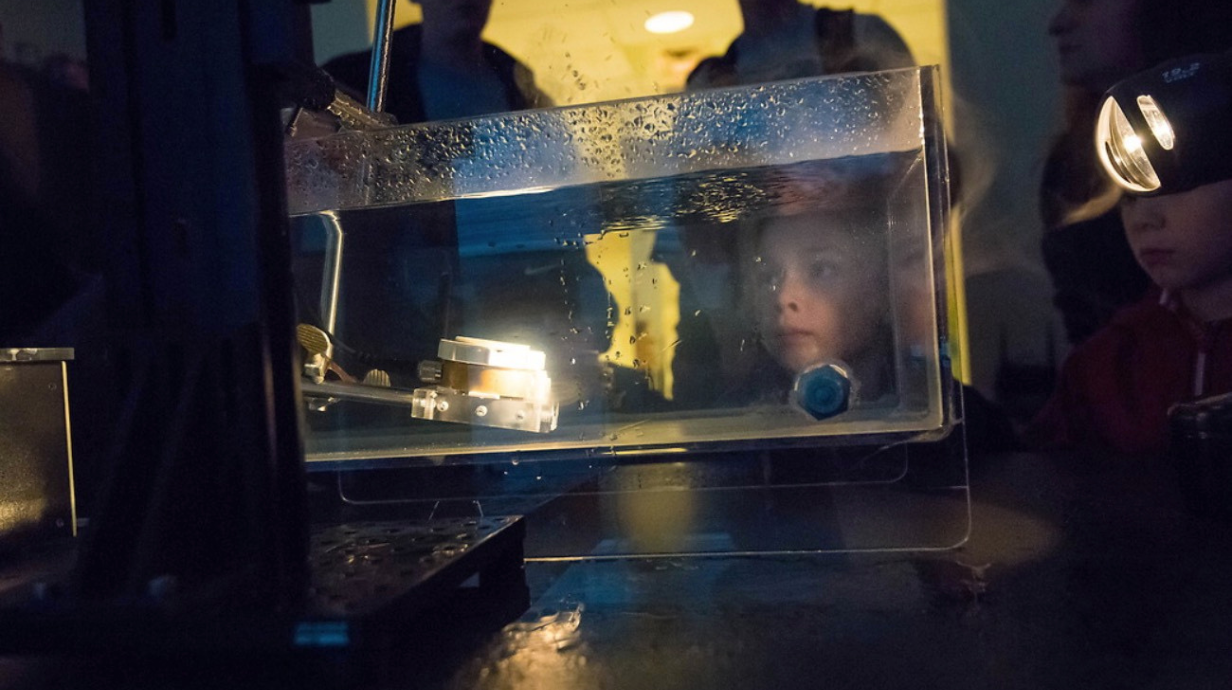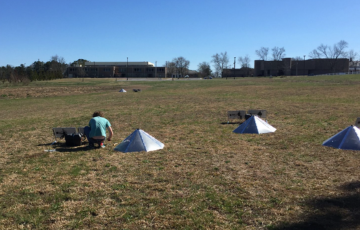Fundamental Acoustics
NCPA's research in fundamental acoustics includes ultrasonics, metamaterials, acoustic manipulation and propagation of sound.

There are numerous applications for fundamental acoustics.
Throughout our history, NCPA’s fundamental acoustics research has included:
- Environmental monitoring: Detecting and analyzing sounds from natural phenomena like thunderstorms or volcanic eruptions to monitor and study environmental conditions.
- Noise control: Assessing and managing noise pollution in urban and rural environments to improve living conditions and wildlife habitats.
- Military and security: Using sound propagation data to enhance surveillance and reconnaissance capabilities.
- Weather prediction: Investigating how sound interacts with different atmospheric conditions can help in predicting weather changes and patterns.
- Acoustic ecology: Studying the impact of sound on ecosystems and animal behavior, particularly how animals use sound for communication, navigation, and predator detection.
Our current research centers on:
Atmospheric Propagation Acoustics
Atmospheric acoustics is focused on the generation and propagation of sound in outdoor settings. It examines how sound waves are influenced by atmospheric conditions such as temperature, humidity, wind patterns, and physical barriers. Researchers in this domain analyze how these factors modify the speed, direction, and intensity of sound. Propagation studies can include all ranges of acoustics signals from low-frequency infrasound up through the audible range.
Ultrasonics
Ultrasound acoustics delves into the study and application of sound waves at frequencies above the range of human hearing. Though inaudible to us, ultrasound waves possess unique properties that make them invaluable across scientific, medical, and industrial fields. This area of acoustics leverages these high-frequency waves for sophisticated imaging, diagnostics, and therapeutic technologies, enhancing both efficiency and efficacy.
Metamaterials & Acoustics Manipulation
NCPA conducts innovative work in manipulating and measuring ultrasound fields, particularly in the manipulation of liquid droplets using ultrasound, which has applications in various scientific, medical and industrial fields. The ultrasonics research group has developed flat lenses for ultrasound, which mimic the properties of curved lenses but are easier to design and fabricate.
Our Work in Fundamental Acoustics
-

Enhancing Tornado Warning Systems with Infra-Sound
Led by principal scientist Dr. Roger Waxler, NCPA researchers working with a grant from the National Oceanic and Atmospheric Administration have been able to detect and track tornadoes using infrasound – low-frequency sound waves inaudible to humans. This project aims to enhance tornado detection accuracy by observing the unique acoustic signals emitted by tornadoes. The researchers are studying the tornado sound sources with infrasound microphone arrays in Mississippi and Alabama. The goal is to enable real-time verification and path projection, significantly improving public safety and response times.
Read More -
Studying the Stability of Nuclear Fuel Storage
The United States has thousands of tons of used nuclear fuel stored in aging steel casks, raising serious safety concerns about the long-term stability of the radioactive material. NCPA researchers were chosen by the U.S. Department of Energy to lead a study on the long-term stability of these canisters using acoustic and ultrasonic approaches.
Read More
